Nestled amidst the lofty peaks of the Himalayas, Tibet beckons travelers with its ancient monasteries, breathtaking landscapes, and vibrant culture steeped in spirituality and tradition. From the sacred city of Lhasa to the remote wilderness of the Tibetan plateau, this mystical land offers a treasure trove of sights and experiences waiting to be explored. Join us on a journey as we unveil the wonders of Tibet and discover the essence of its timeless allure.
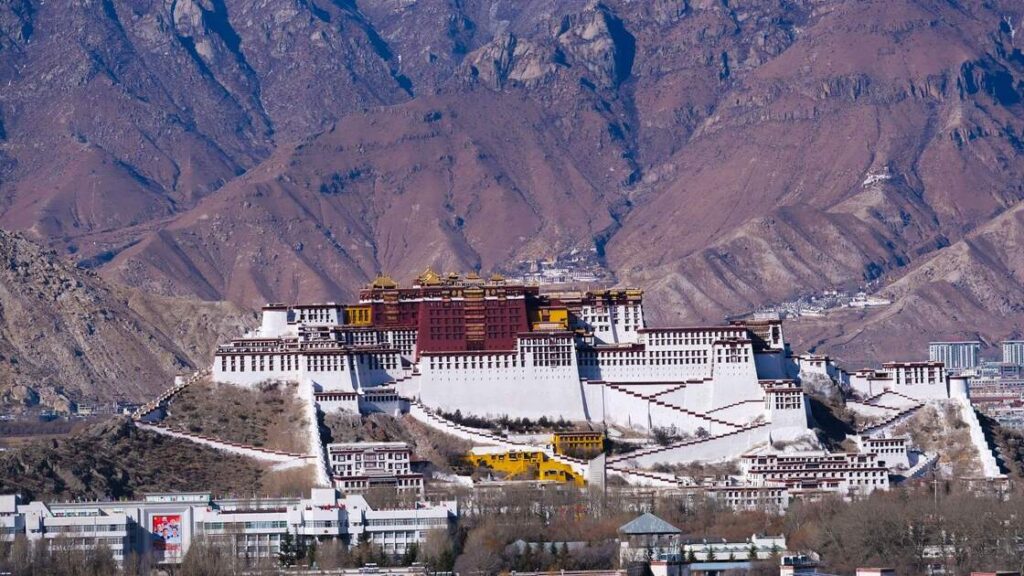
1. Potala Palace: A Sacred Citadel of Tibetan History and Culture
Perched majestically atop Marpo Ri hill in the heart of Lhasa, the Potala Palace stands as an iconic symbol of Tibet’s rich cultural heritage and spiritual legacy. This architectural marvel, which dominates the city’s skyline, is not merely a palace but a sacred citadel that embodies the essence of Tibetan Buddhism and centuries of dynastic history.
A UNESCO World Heritage Site
Designated as a UNESCO World Heritage Site in 1994, the Potala Palace is recognized for its outstanding architectural and cultural significance. Constructed in the 7th century during the reign of King Songtsen Gampo, the palace underwent extensive expansions and renovations over the centuries, culminating in the imposing structure that we see today. Its towering white walls, golden roofs, and intricate Tibetan-style artwork serve as a testament to the skill and craftsmanship of Tibetan artisans throughout the ages.

Home of the Dalai Lamas
For over 300 years, the Potala Palace served as the winter residence of the Dalai Lamas, the spiritual and temporal leaders of Tibet. Within its labyrinthine halls and chambers, the Dalai Lamas conducted state affairs, received foreign dignitaries, and performed religious rituals, shaping the course of Tibetan history and culture. The palace also housed countless treasures, including sacred relics, thangka paintings, and precious manuscripts, which attested to Tibet’s spiritual wealth and cultural legacy.
Spiritual Significance
Beyond its historical and architectural significance, the Potala Palace holds profound spiritual importance for Tibetan Buddhists worldwide. At its core lies the Red Palace, which enshrines the sacred relics and tombs of past Dalai Lamas, including the revered Fifth Dalai Lama. Pilgrims and devotees flock to the palace to pay homage to these holy sites, circumambulating its towering walls in a gesture of reverence and devotion.
Symbol of Tibetan Identity
The Potala Palace is more than just a historical monument; it is a symbol of Tibetan identity and resilience in the face of adversity. Despite the challenges of political upheaval and cultural suppression, the palace continues to stand as a beacon of hope and inspiration for Tibetans both inside and outside of Tibet. Its enduring presence serves as a reminder of the indomitable spirit of the Tibetan people and their unwavering commitment to preserving their heritage and traditions.

Visiting the Potala Palace
Today, the Potala Palace remains one of Tibet’s most visited attractions, drawing tourists from around the world to marvel at its architectural splendor and immerse themselves in its rich cultural heritage. Visitors can explore the palace’s myriad halls, chapels, and galleries, admiring its ornate artwork, ancient artifacts, and panoramic views of Lhasa and the surrounding mountains. As they ascend its steep staircases and traverse its winding corridors, they are transported back in time to an era of dynastic grandeur and spiritual enlightenment, experiencing firsthand the timeless allure of Tibet’s most iconic landmark.
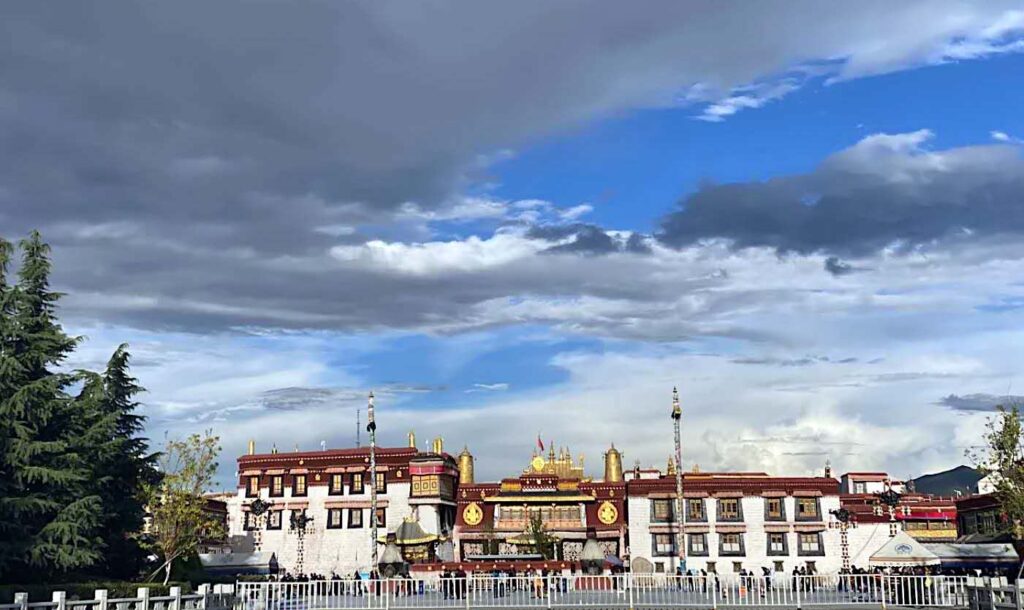
2. Jokhang Temple: The Spiritual Heartbeat of Lhasa
Nestled within the bustling streets of Lhasa’s old town, the Jokhang Temple stands as a beacon of Tibetan Buddhism and a testament to the enduring spiritual devotion of the Tibetan people. Built in the 7th century by King Songtsen Gampo, this sacred temple holds a revered place in Tibetan culture and serves as a focal point for pilgrims and visitors seeking spiritual solace and enlightenment.
Ancient Origins and Sacred Relics
The Jokhang Temple’s origins are steeped in legend and mythology, with its construction attributed to the influence of Princess Wencheng and Princess Bhrikuti, who brought Buddhist artifacts and relics from Nepal and China to Tibet. Among its most revered treasures is the Jowo Rinpoche statue, a revered image of the Buddha Shakyamuni believed to have been blessed by the Buddha himself. This sacred relic is enshrined within the temple’s inner sanctum, drawing pilgrims from far and wide to pay homage and receive blessings.
Architectural Splendor
Architecturally, the Jokhang Temple is a masterpiece of Tibetan Buddhist art and craftsmanship. Its distinctive blend of Tibetan, Nepalese, Indian, and Chinese architectural styles reflects the diverse cultural influences that shaped Tibet’s religious and artistic heritage over the centuries. The temple’s exterior is adorned with intricately carved wooden beams, colorful murals, and gilded rooftops, while its interior houses a labyrinth of chapels, prayer halls, and shrines, each adorned with exquisite Buddhist artwork and sacred relics.

Pilgrimage Destination
For Tibetan Buddhists, the Jokhang Temple holds profound spiritual significance as one of the holiest pilgrimage sites in the region. Pilgrims from all walks of life embark on arduous journeys to Lhasa, prostrating themselves along the way as a gesture of devotion and humility. Upon reaching the temple’s sacred threshold, they circumambulate its perimeter, spinning prayer wheels and chanting mantras in a ritual of purification and merit-making. For many, the pilgrimage to the Jokhang Temple is a transformative journey of self-discovery and spiritual renewal, offering solace and inspiration in the face of life’s challenges.
Cultural Hub and Living Tradition
Beyond its religious significance, the Jokhang Temple serves as a vibrant cultural hub and center of community life in Lhasa. Throughout the year, the temple hosts a myriad of religious ceremonies, festivals, and rituals, which attract throngs of devotees and spectators alike. From the colorful pageantry of Tibetan New Year celebrations to the solemnity of Buddhist teachings and rituals, the temple pulsates with the rhythm of Tibetan life and spirituality, connecting past and present in a seamless tapestry of tradition and devotion.
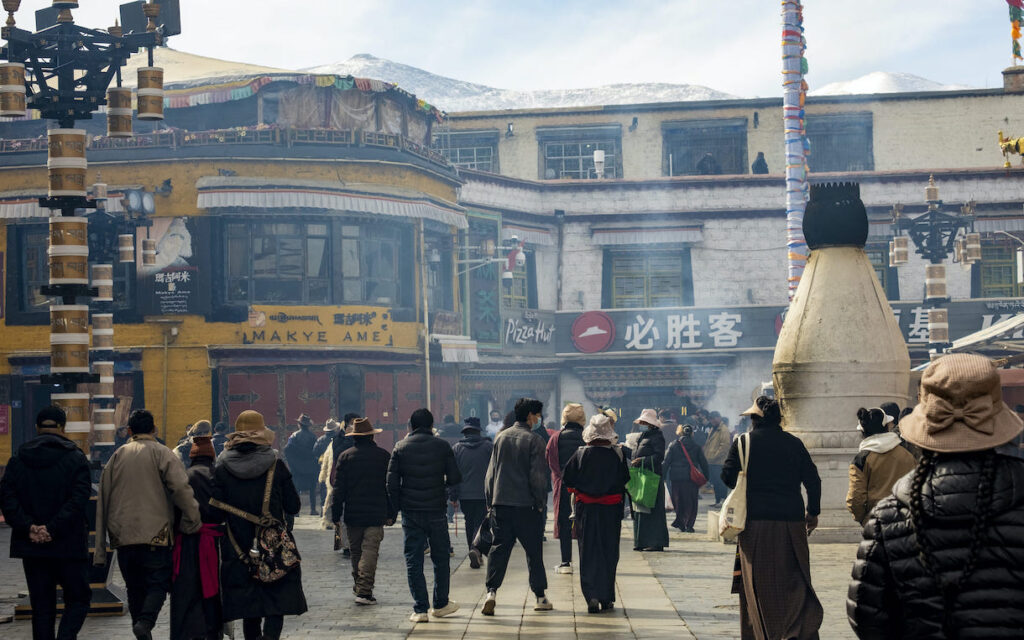
Visiting the Jokhang Temple
For visitors to Lhasa, a visit to the Jokhang Temple offers a window into the soul of Tibetan Buddhism and a chance to witness firsthand the enduring legacy of Tibet’s spiritual heritage. As they wander through its hallowed halls and mingle with pilgrims from around the world, they are enveloped in an atmosphere of reverence and tranquility, experiencing the timeless allure of one of Tibet’s most sacred sites.
3. Sera Monastery: Echoes of Philosophical Debate
Nestled at the foothills of the Tatipu Mountains just a few kilometers north of Lhasa, Sera Monastery stands as a testament to Tibet’s rich monastic tradition and intellectual heritage. Founded in 1419 by Jamchen Chojey, a disciple of Tsongkhapa, the monastery has served as a center for the study of Tibetan Buddhism and a hub for philosophical debate for centuries.

Debating Courtyard
One of the most iconic features of Sera Monastery is its debating courtyard, where monks engage in rigorous philosophical debates on Buddhist scripture and doctrine. Clad in traditional maroon robes and wielding wooden clappers, the monks engage in lively exchanges, employing logic, reason, and dialectics to unravel the mysteries of Buddhist philosophy. Visitors to the monastery can witness these debates firsthand, marveling at the monks’ intellectual prowess and the animated atmosphere of scholarly inquiry.
Monastic Life
Beyond its role as a center for philosophical debate, Sera Monastery is home to a vibrant monastic community dedicated to the practice of Tibetan Buddhism. The monastery’s sprawling complex encompasses numerous chapels, assembly halls, and living quarters, where monks engage in daily rituals, prayers, and meditation practices. Visitors can explore the monastery’s various halls and chapels, admiring its ornate artwork, ancient scriptures, and sacred relics, and gaining insight into the daily life of Tibetan monks.
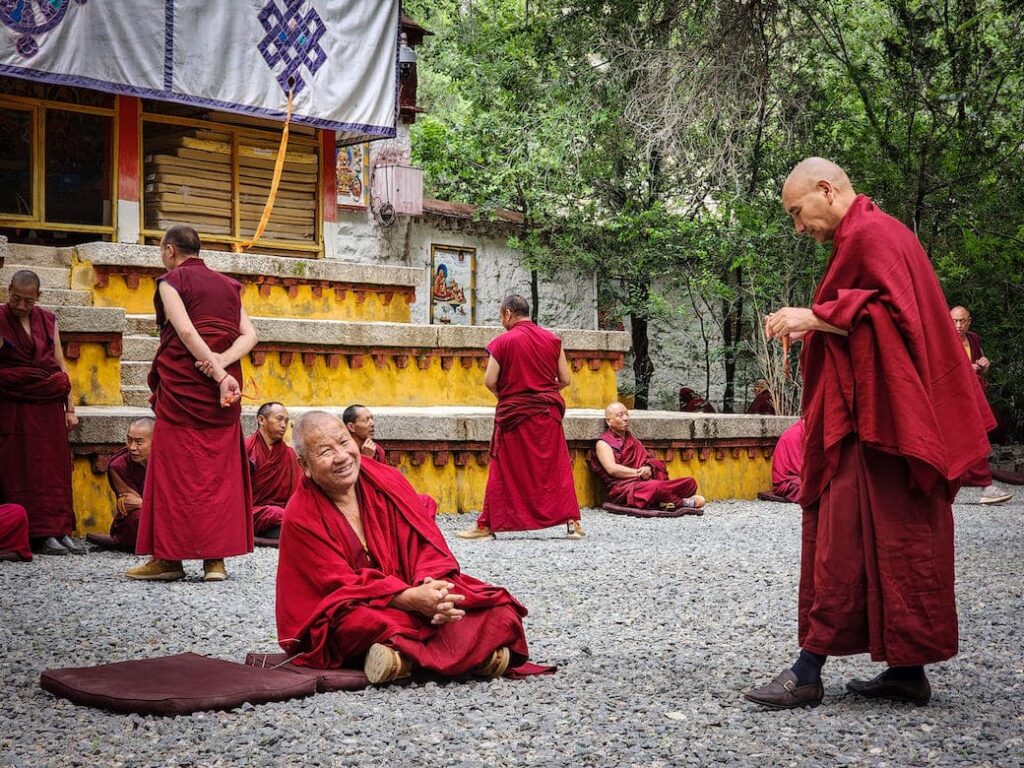
Chapel of Tsongkhapa
At the heart of Sera Monastery lies the Chapel of Tsongkhapa, dedicated to the founder of the Gelug school of Tibetan Buddhism. This revered shrine houses a magnificent statue of Tsongkhapa, surrounded by intricate thangka paintings, butter sculptures, and offerings of butter lamps and incense. Pilgrims and devotees flock to the chapel to pay homage to Tsongkhapa and receive blessings for wisdom, compassion, and spiritual enlightenment.
Festivals and Rituals
Throughout the year, Sera Monastery hosts a variety of religious festivals, ceremonies, and rituals that showcase the rich cultural heritage of Tibetan Buddhism. One of the most notable events is the Monlam Chenmo, or Great Prayer Festival, held annually in the first lunar month. During this auspicious occasion, monks from Sera and other monasteries gather to perform rituals, offer prayers, and engage in acts of merit-making for the benefit of all sentient beings.

Preserving Tradition in a Modern World
Despite the challenges of modernity and cultural change, Sera Monastery remains a bastion of Tibetan Buddhist tradition and learning, preserving ancient wisdom and spiritual practices for future generations. As visitors explore its hallowed halls and witness the monks’ devotion and dedication, they are transported back in time to a world where philosophy, spirituality, and scholarly inquiry converge in a timeless quest for truth and enlightenment.
4. Mount Everest: The Majestic Roof of the World
Rising to a staggering height of 8,848 meters (29,029 feet), Mount Everest stands as the ultimate symbol of human endeavor and the highest point on Earth. Located on the border between Tibet and Nepal, this majestic peak, known as Chomolungma in Tibetan, has captivated the imagination of adventurers and explorers for centuries, drawing them to its formidable slopes in pursuit of glory and enlightenment.
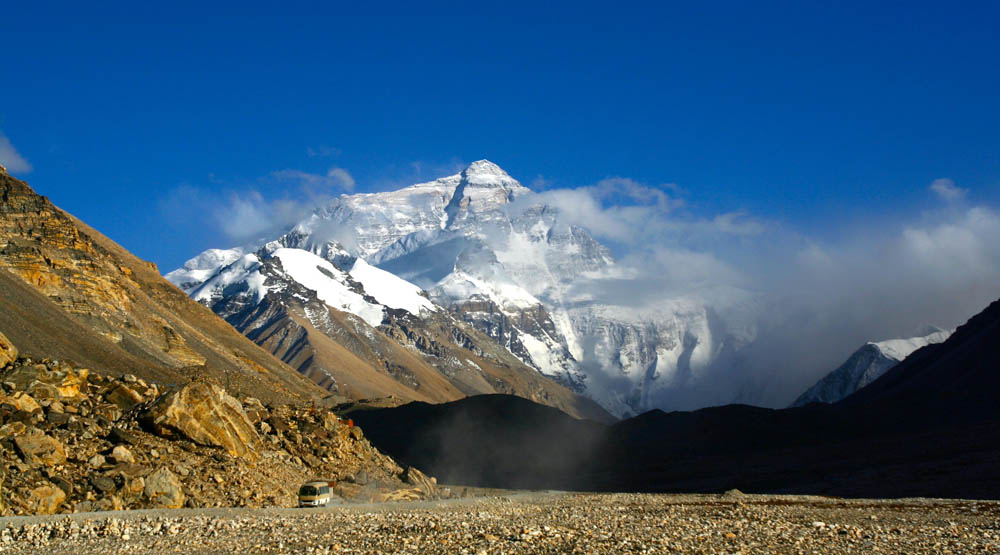
Sacred Significance
For Tibetans, Mount Everest holds profound spiritual significance as a sacred mountain and the abode of the goddess Jomo Langma. Known as “Mother Goddess of the Universe,” Jomo Langma is revered as a protective deity who bestows blessings and prosperity upon the land and its inhabitants. Pilgrims from Tibet and beyond undertake arduous journeys to circumambulate the mountain’s base, known as the kora, in a ritual of devotion and merit-making.
Trekking Adventures
For adventurous travelers, Mount Everest offers a once-in-a-lifetime opportunity to embark on a trekking expedition to Everest Base Camp. The journey begins in the vibrant city of Lhasa, where trekkers acclimatize to the high altitude and immerse themselves in Tibetan culture before setting off towards the Everest region. Along the way, they traverse rugged terrain, crossing high mountain passes, traversing glacial moraines, and encountering breathtaking landscapes at every turn.

Panoramic Views
As trekkers approach Everest Base Camp, the majestic presence of Mount Everest looms ever larger on the horizon, casting a spell of awe and reverence. From the base camp itself, located at an altitude of 5,364 meters (17,598 feet), trekkers are treated to panoramic views of the surrounding Himalayan peaks, including Lhotse, Makalu, and Cho Oyu. The sight of Everest’s towering summit, bathed in the golden light of dawn or illuminated by the glow of sunset, is a sight that will remain etched in the memory forever.
Climbing Expeditions
For the most intrepid adventurers, Mount Everest presents the ultimate challenge: a climbing expedition to the summit of the world’s highest peak. Each year, experienced mountaineers from around the world converge on the Everest Base Camp, braving extreme weather, treacherous terrain, and altitude sickness in their quest to reach the summit. The journey to the top is fraught with peril and uncertainty, yet for those who succeed, the sense of accomplishment and triumph is unparalleled.
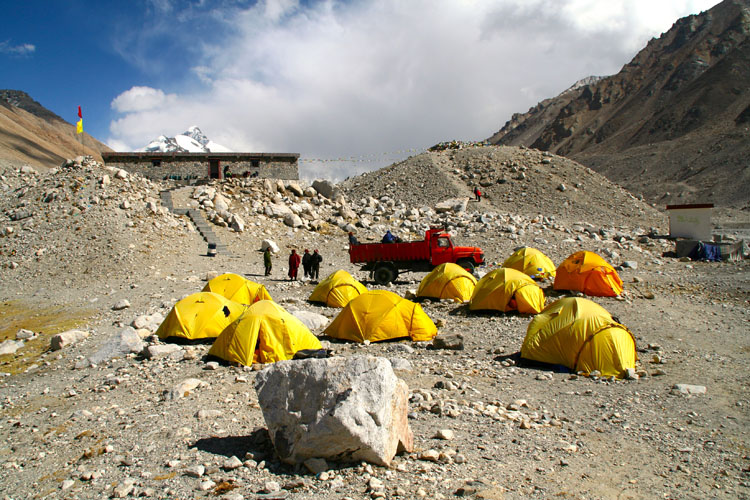
Preserving the Himalayan Ecosystem
As travelers embark on their journey to Mount Everest, it is essential to recognize the fragile ecosystem of the Himalayas and the need to preserve its pristine beauty for future generations. Responsible tourism practices, such as minimizing waste, respecting local customs and traditions, and supporting sustainable tourism initiatives, are essential for ensuring the long-term sustainability of the region and protecting its natural and cultural heritage.

Whether embarking on a trek to Everest Base Camp, witnessing the mountain’s majestic beauty from afar, or simply marveling at its towering presence from the comfort of a nearby village, Mount Everest offers a profound and transformative experience for all who encounter it. As travelers stand in awe of this majestic peak, they are reminded of the indomitable spirit of human exploration and the enduring power of nature to inspire, challenge, and uplift the soul.
5. Namtso Lake: Serenity Amidst the Tibetan Plateau
Nestled at an altitude of 4,718 meters (15,479 feet) amidst the vast expanse of the Tibetan plateau, Namtso Lake is a jewel of natural beauty and spiritual significance. Known as the “Heavenly Lake” in Tibetan, Namtso captivates visitors with its crystalline waters, snow-capped peaks, and ethereal beauty, offering a serene sanctuary amidst the rugged wilderness of the Tibetan landscape.

Sacred Significance
For Tibetans, Namtso Lake holds profound spiritual significance as one of the holiest bodies of water in the region. Revered as a sacred site of pilgrimage and meditation, the lake is believed to be inhabited by deities and spirits who bestow blessings and protection upon those who visit its shores. Pilgrims and devotees undertake circumambulations of the lake, known as kora, as a form of spiritual purification and merit-making, while monks and hermits seek solitude and enlightenment in its pristine surroundings.

Breathtaking Scenery
Surrounded by snow-capped peaks and rolling grasslands, Namtso Lake boasts breathtaking scenery that captivates the imagination and inspires awe. The mirror-like surface of the lake reflects the ever-changing colors of the sky, from the deep blue of daytime to the fiery hues of sunset and the shimmering silver of moonlight. Against this backdrop, migratory birds soar overhead, yaks graze on the grassy plains, and nomadic herders traverse the landscape with their flocks, creating a tableau of natural beauty and tranquility.
Trekking and Camping
For adventurous travelers, Namtso Lake offers ample opportunities for trekking, camping, and outdoor exploration. Numerous trails crisscross the surrounding hills and valleys, leading to panoramic viewpoints, hidden caves, and sacred hermitages. Along the way, trekkers may encounter nomadic encampments, where they can experience traditional Tibetan hospitality and learn about the unique way of life of the region’s inhabitants. Camping by the shores of Namtso Lake under the vast canopy of stars is an experience that is both exhilarating and humbling, offering a rare glimpse into the untamed beauty of the Tibetan wilderness.
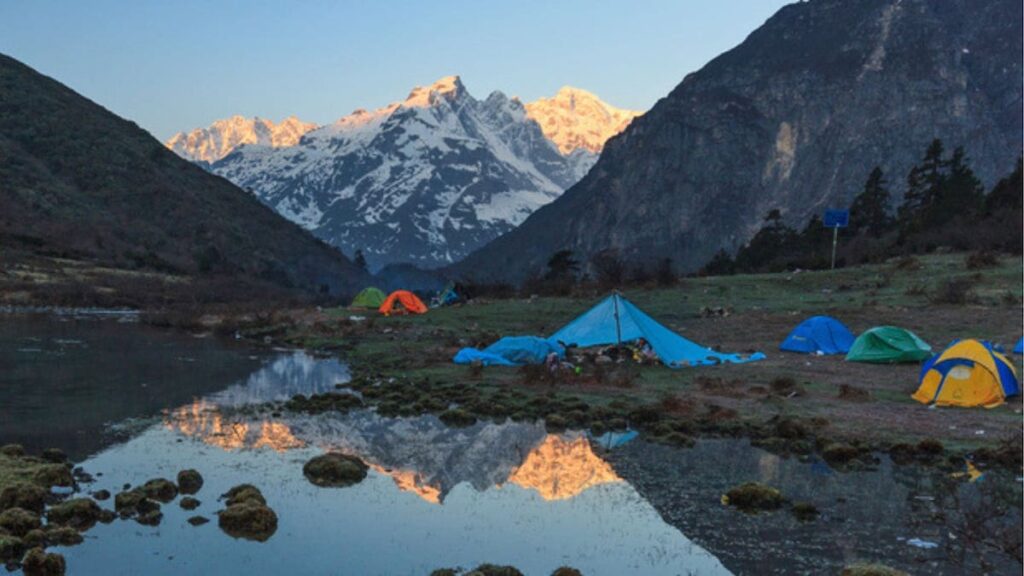
Photographic Paradise
Photographers and nature enthusiasts flock to Namtso Lake in search of the perfect shot, drawn by its otherworldly beauty and photogenic landscapes. From sunrise to sunset, the changing light and atmospheric conditions create a photographer’s paradise, with endless opportunities for capturing stunning vistas, dramatic skies, and reflections in the crystal-clear waters of the lake. Whether capturing the majestic peaks of Nyenchen Tanglha or the tranquil shores of Tashi Dor Island, Namtso Lake offers a wealth of photographic subjects waiting to be discovered.
Preserving the Natural Environment
As visitors to Namtso Lake, it is essential to tread lightly and respect the fragile ecosystem of this pristine wilderness. Responsible tourism practices, such as leaving no trace, minimizing waste, and supporting local conservation efforts, are essential for preserving the natural beauty and ecological integrity of the region for future generations to enjoy.

Namtso Lake stands as a timeless sanctuary of natural beauty and spiritual serenity amidst the rugged grandeur of the Tibetan plateau. Whether embarking on a pilgrimage, seeking adventure in the great outdoors, or simply marveling at its ethereal beauty, visitors to Namtso Lake are sure to be captivated by its timeless allure and profound sense of tranquility. As the sun sets behind the snow-capped peaks and the stars emerge in the night sky, travelers are reminded of the eternal majesty and boundless wonder of the Tibetan landscape.
Conclusion
Tibet is a land of boundless wonder and spiritual enlightenment, where ancient traditions meet breathtaking landscapes in a harmonious tapestry of beauty and grace. Whether exploring sacred temples in Lhasa, witnessing monastic debates at Sera Monastery, or gazing upon the towering summit of Mount Everest, travelers to Tibet are sure to be captivated by the timeless allure of this mystical land. As you embark on your journey of discovery, may you be inspired by the profound wisdom and enduring spirituality that permeate every corner of Tibet’s storied landscape.
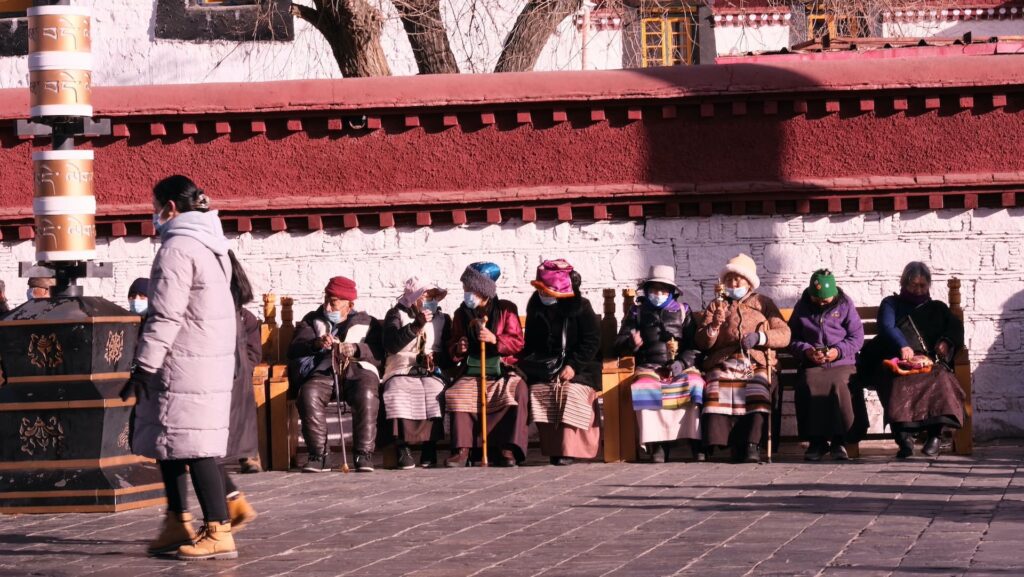

[…] we journey through the wild landscapes of Tibet, we are reminded of the fragile beauty and ecological richness of this remote and enchanting […]